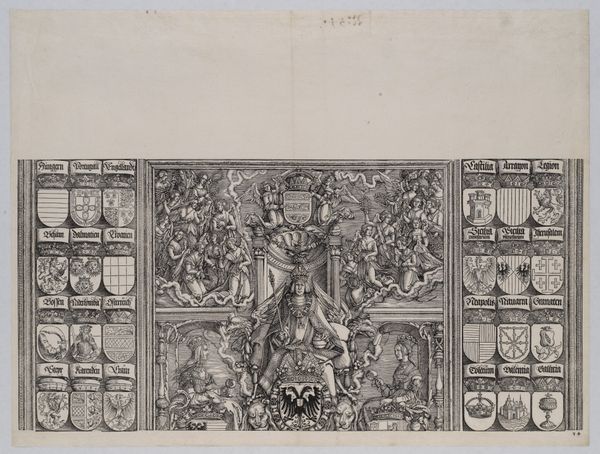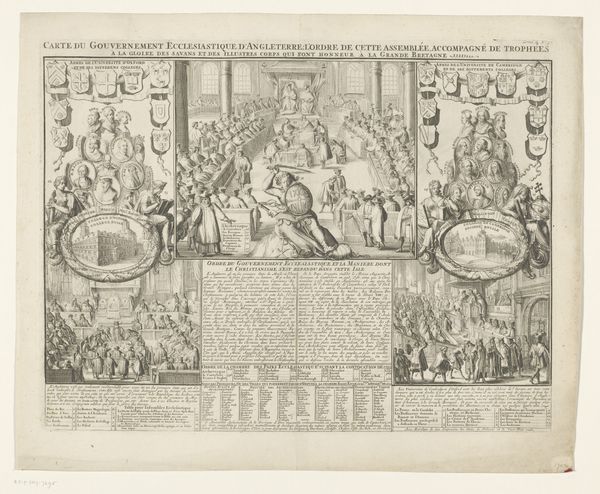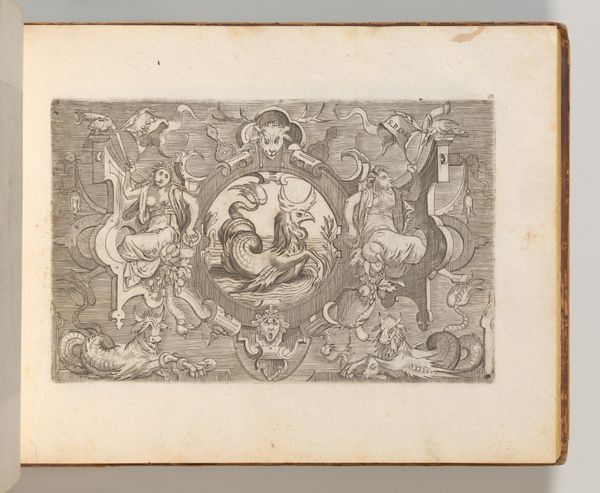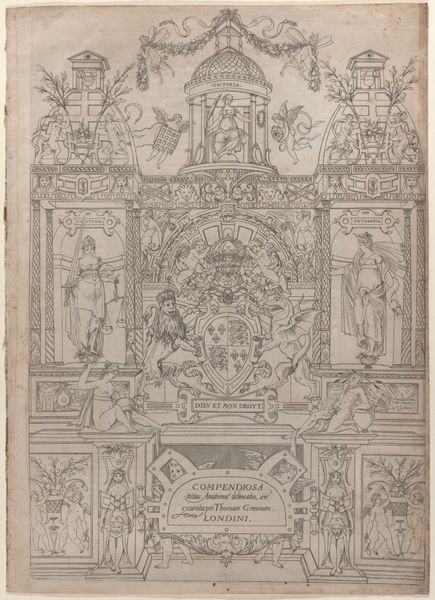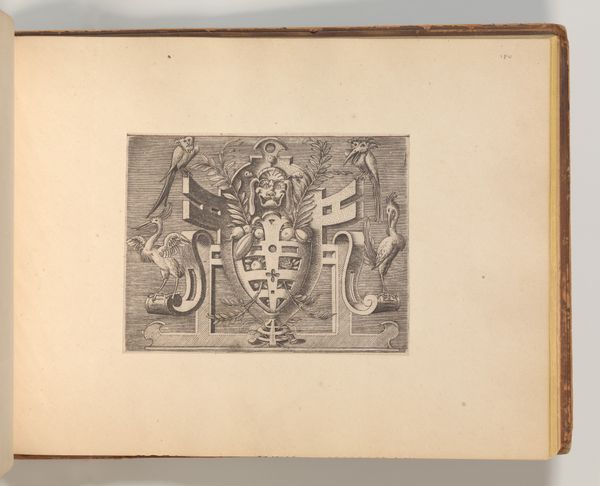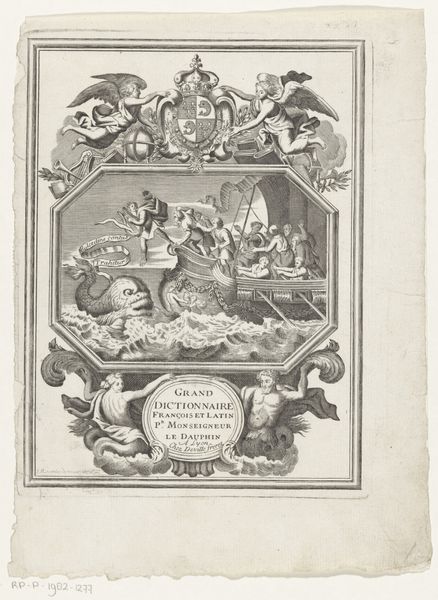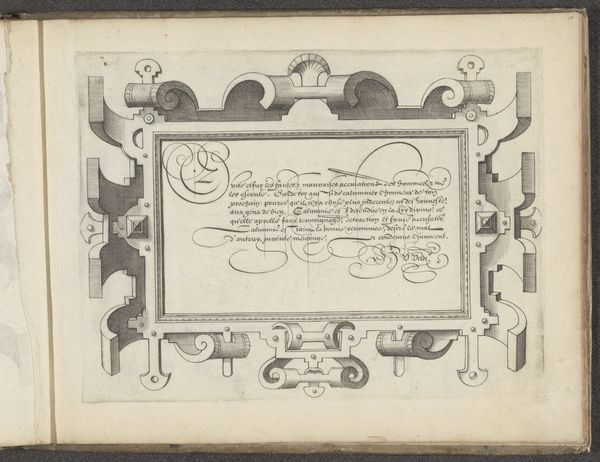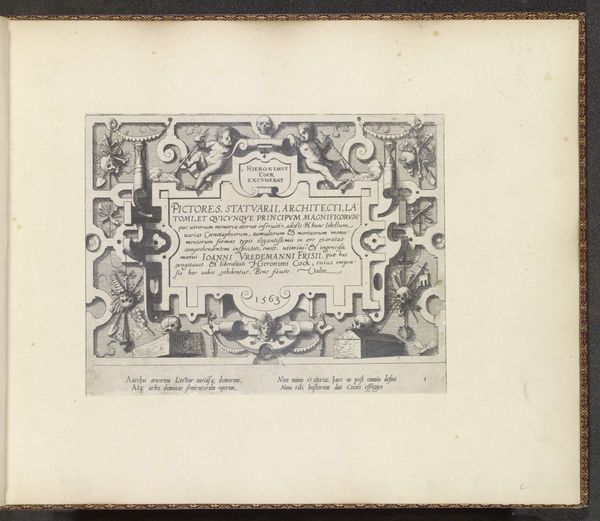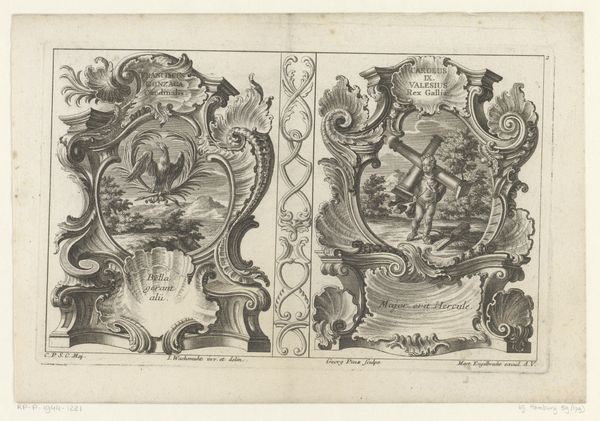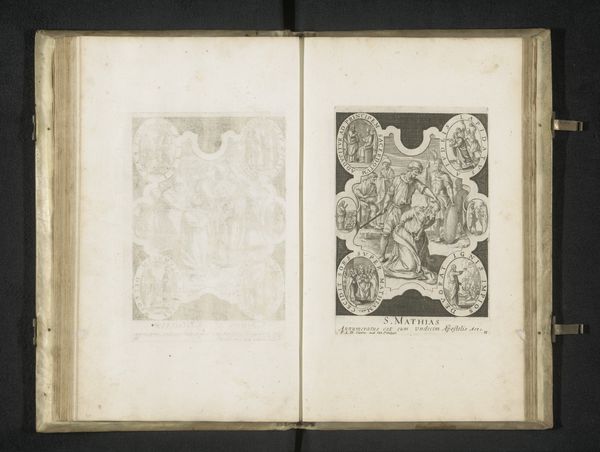
The Lower Portion of the Genealogy of Maximilian; with the Left Edge of the Scroll for the Explanatory Text, from the Arch of Honor, proof, dated 1515, printed 1517-18 1515 - 1517
0:00
0:00
drawing, print, engraving
#
drawing
#
allegory
# print
#
11_renaissance
#
history-painting
#
engraving
Dimensions: Sheet: 18 5/16 in. × 25 in. (46.5 × 63.5 cm)
Copyright: Public Domain
Editor: This engraving from 1515-1517, by Hans Springinklee, titled "The Lower Portion of the Genealogy of Maximilian," is just incredible. It's teeming with coats of arms and figures. What catches my eye is the blatant display of power and lineage, a kind of visual family tree. What stands out to you? Curator: Absolutely. It's more than just a family tree; it's a carefully constructed narrative of imperial power, isn't it? Consider the historical context: Maximilian I was Holy Roman Emperor during a period of intense political maneuvering and the rise of print culture. This genealogy isn’t just about bloodline, it's about legitimizing his rule in a rapidly changing Europe. What do you think about the decision to create prints, what kind of people do you think these artworks were targeting? Editor: That’s fascinating! So, making multiple copies through printmaking allows for wider dissemination of his family’s importance. And perhaps serves as propaganda targeted to influential people in Maximilian's territory and others? Curator: Precisely! And the Arch of Honor, from which this fragment comes, was an enormous propaganda project. Springinklee’s intricate details celebrate lineage, but also, what narratives of gender do you see playing out, specifically in how certain figures are presented, and how does this affect our reading of Maximilian’s rule? Editor: Hmmm, I hadn’t thought about it that way. There are women supporting his legacy at the bottom with banners, labelled with 'Francia' and 'Hispania'... Curator: Yes! These figures can be seen to embody countries, with the message of women "bearing" male figures (in this case Maximilian). Therefore they're promoting the legacy as male rulers with lands under them, while pushing a biased view about women, wouldn’t you say? Editor: That's a really great perspective. I had been missing the nuances of how power dynamics are shown. Curator: It's a valuable insight to recognize the historical power imbalances presented within the image and who might benefit from such visuals.
Comments
No comments
Be the first to comment and join the conversation on the ultimate creative platform.

